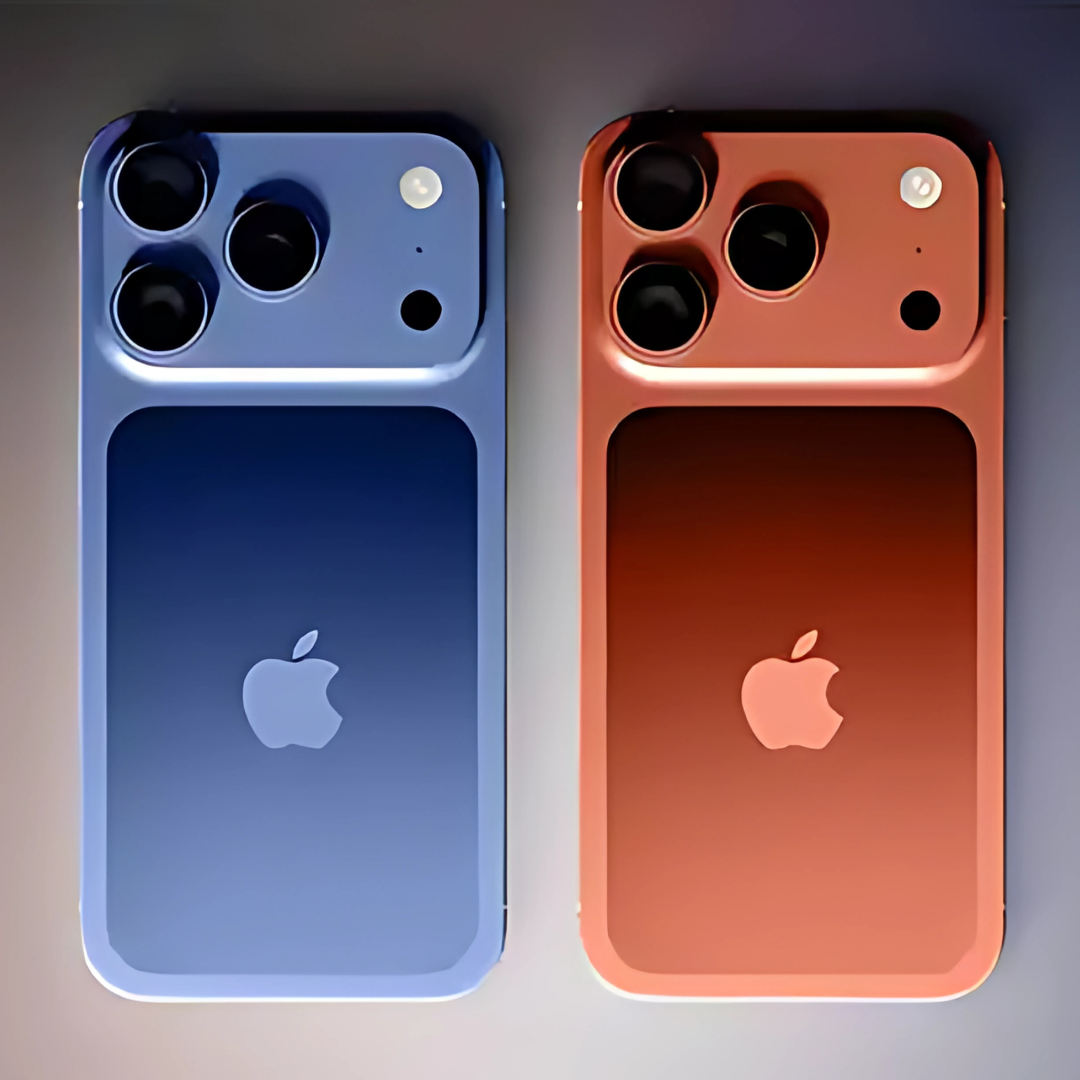Now Reading: The iPhone 17 Pricing Strategy That Makes No Sense
-
01
The iPhone 17 Pricing Strategy That Makes No Sense
The iPhone 17 Pricing Strategy That Makes No Sense

Apple’s iPhone 17 costs $100 less than iPhone 16 despite being newer – plus the iPhone Air’s 5.6mm thickness hides shocking compromises. Discover the 7 features Apple buried in their September event that change everything about your next upgrade decision
Apple’s “Awe Dropping” event yesterday just delivered the most shocking iPhone announcement in years, and honestly, most people are completely missing the game-changing details hiding in plain sight. While everyone’s obsessing over the iPhone Air’s 5.6mm thickness and that $999 price tag, the real story lies in the subtle features and strategic decisions that Apple buried deep in their presentation. But here’s the kicker – these “hidden” elements might be exactly why you should (or shouldn’t) upgrade.

Let’s be brutally honest: you probably watched Apple’s September 9th event focusing on the flashy stuff – the ultra-thin design, the new colors, maybe even the pricing announcements. But while you were busy being impressed by the obvious, Apple was quietly revolutionizing how we think about smartphone ecosystems, and most viewers walked away without understanding what they actually witnessed.
The iPhone Air Thickness That’s Actually Impossible
Everyone’s talking about how the iPhone Air is just 5.6mm thick at its thinnest point, but here’s what nobody’s discussing: this measurement is technically misleading in the most clever way possible. At its thinnest point, the new model is 5.6mm thick. To put those measurements in perspective, the iPhone 16 Pro is… significantly thicker, but Apple conveniently avoided mentioning the thickest points of the iPhone Air.
The “thinnest point” specification is pure marketing genius because it allows Apple to claim record-breaking dimensions while potentially having camera bumps, ports, or other elements that are much thicker. Think about it – when was the last time you held your phone at its “thinnest point”? You don’t. You hold it where the cameras, buttons, and ports are, which are likely much thicker than that magical 5.6mm measurement.
This thickness obsession also raises serious questions about battery life, structural integrity, and heat management. Physics doesn’t care about Apple’s marketing department – cramming iPhone-level performance into a 5.6mm frame means compromises somewhere, and Apple’s presentation conveniently skipped over what those compromises might be.
The iPhone 17 Pricing Strategy That Makes No Sense
Here’s where Apple’s pricing announcements get genuinely confusing: The iPhone 16 with 256 gigabytes of storage started at $899, while the iPhone 17 with 256 gigabytes of storage will start at $799. The iPhone 16 Plus with 256 gigabytes of storage started at $999, and the iPhone Air with 256 gigabytes of storage will start at $999.

Wait, hold up. The iPhone 17 – presumably the newer, more advanced model – costs $100 less than the iPhone 16? And the iPhone Air costs the same as the iPhone 16 Plus despite being positioned as a premium ultra-thin device? This pricing structure suggests either Apple is repositioning its entire lineup, or there are significant feature differences that weren’t clearly explained during the presentation.
This backward pricing model indicates that Apple might be segmenting the market in completely new ways. The iPhone 17 at $799 could be targeting budget-conscious consumers who want the latest model number without premium features, while the iPhone Air at $999 targets design-conscious users willing to pay for form factor innovation. It’s psychological pricing that prioritizes perception over traditional value hierarchies.
The iOS 26 Release Date Nobody Caught
Buried deep in Apple’s announcements was a crucial detail that most viewers completely missed: Apple CEO Tim Cook and his team unveiled the iPhone 17 line of devices, Apple Watches, new AirPods Pro and the release date for iOS 26. The fact that iOS 26 got a release date announcement suggests Apple is moving faster with software updates than anyone anticipated.
Typically, Apple announces iOS versions at WWDC in June, with releases tied to new iPhone launches in September. But announcing iOS 26 alongside hardware in September 2025 suggests either an accelerated development timeline or a fundamental shift in how Apple coordinates software and hardware releases.
This timing also raises questions about iOS 25 – are we skipping versions, or has Apple’s development cycle shifted so dramatically that they’re now working multiple versions ahead of their traditional timeline? The implications for developers, existing device compatibility, and feature rollouts could be massive.
The Apple Intelligence Integration That Changes Everything
“iPhone 16 and iPhone 16 Plus mark the beginning of a new era for iPhone with Apple Intelligence…” This isn’t just marketing speak – it represents Apple’s biggest strategic shift since the introduction of the App Store. Apple Intelligence integration suggests that future iPhone functionality will be fundamentally different from current models, not just incrementally improved.
The phrase “beginning of a new era” indicates that current iPhone users might be holding devices that will become functionally obsolete much faster than previous generations. If Apple Intelligence becomes central to basic iPhone operations, older devices without AI processing capabilities could lose compatibility with essential features within just a few years instead of the typical 5-7 year support cycle.
This also means that the iPhone Air and iPhone 17 aren’t just new phones – they’re platforms for an entirely different type of computing experience that existing users can’t access through software updates alone. It’s planned obsolescence disguised as innovation.

The Storage Strategy That Reveals Apple’s True Intentions
Notice how all the pricing announcements specifically mention 256GB storage configurations? The iPhone 16 with 256 gigabytes of storage started at $899, while the iPhone 17 with 256 gigabytes of storage will start at $799. This suggests that 256GB has become Apple’s new baseline, which fundamentally changes the economics of iPhone ownership.
If 256GB is now the starting point for price comparisons, it means Apple has either eliminated lower storage options or made them so unattractive that they’re not worth mentioning. This storage bump reflects the reality of Apple Intelligence, AI processing, and advanced camera capabilities that require significantly more local storage than previous iPhone generations.
The storage strategy also indicates that Apple expects users to rely less on cloud storage and more on device-based processing and storage. This shift toward local processing aligns with privacy concerns but also creates higher barriers to entry for budget-conscious consumers who previously could buy lower-storage models.
The Color Options That Signal Market Research
iPhone 16 and iPhone 16 Plus will be available in five bold colors: black, white, pink, teal, and ultramarine. While color options might seem trivial, Apple’s color choices reflect extensive market research and demographic targeting that reveals their intended audience for each model.
The inclusion of “teal” and “ultramarine” as color options suggests Apple is targeting younger demographics who prefer unique, social-media-friendly aesthetics over traditional professional colors. These aren’t colors chosen by engineers – they’re colors chosen by marketing teams who understand Instagram culture and TikTok trends.
The color strategy also indicates that Apple views the iPhone 16/16 Plus as lifestyle devices rather than professional tools, which aligns with their positioning as more affordable, consumer-focused options compared to Pro models. Color psychology in product marketing is surprisingly sophisticated, and Apple’s choices reveal exactly who they think will buy these phones.
The Pre-Order Date Strategy That Maximizes Profits
Pre-orders begin Friday, September 13, with availability beginning Friday, September 20. This timeline might seem standard, but it’s actually a carefully calculated strategy designed to maximize both demand and profit margins while minimizing inventory risks.
The one-week gap between pre-orders and availability creates artificial scarcity that drives early adoption and reduces Apple’s financial risk. If pre-order numbers are lower than expected, Apple can adjust production quantities before manufacturing costs become sunk investments. If pre-orders exceed expectations, the scarcity increases perceived value and justifies premium pricing.
September 13th also strategically positions pre-orders at the end of a work week, when consumers are more likely to make impulse purchases and have time to research and compare options over the weekend. The September 20th availability date ensures delivery during the following weekend, maximizing unboxing satisfaction and social media sharing.
The AirPods Pro 3 Integration Nobody’s Discussing
Apple CEO Tim Cook and his team unveiled the iPhone 17 line of devices, Apple Watches, new AirPods Pro and the release date for iOS 26. The simultaneous announcement of AirPods Pro 3 alongside new iPhones suggests much deeper integration between devices than Apple explicitly explained.
This integrated announcement strategy indicates that the new iPhones are designed specifically to work with AirPods Pro 3 in ways that previous generations cannot. Whether this involves new wireless protocols, enhanced audio processing, or exclusive features, the timing suggests that getting the full iPhone experience now requires purchasing multiple Apple devices simultaneously.
The ecosystem lock-in implications are staggering. If core iPhone features work best (or only) with the latest AirPods, Apple has effectively increased the real cost of iPhone ownership while making it much harder for users to switch to competing platforms or mix Apple products with third-party accessories.
The Apple Watch Series 11 Connection That Creates Dependencies
The announcement of Apple Watch Series 11 alongside new iPhones isn’t coincidental – it represents Apple’s strategy of creating device dependencies that make individual upgrades economically irrational. Apple CEO Tim Cook and his team unveiled the iPhone 17 line of devices, Apple Watches, new AirPods Pro and the release date for iOS 26.
This simultaneous launch strategy means that optimal functionality requires upgrading multiple devices at once, significantly increasing the total cost of staying current with Apple’s ecosystem. It’s brilliant from a business perspective and financially devastating for consumers who thought they were just buying a new phone.
The timing also suggests that many current Apple Watch features might not work properly with new iPhones, or that new iPhone features require the latest Apple Watch to function correctly. This creates artificial obsolescence across product lines and forces expensive ecosystem-wide upgrades.
The Satellite Features Extension That Reveals Profitability Problems

Apple is extending free access to satellite features for an additional year for existing iPhone 14 and iPhone 15 users. This extension announcement might seem generous, but it actually reveals that Apple’s satellite features aren’t generating the revenue they expected and might be costing more to operate than anticipated.
Extending free access suggests either low adoption rates that require longer trial periods to build user habits, or operational costs that make immediate monetization impractical. Either scenario indicates that satellite connectivity – positioned as a premium safety feature – isn’t performing as expected financially.
The extension also creates expectations for future free periods that might be difficult to reverse. Once users expect free satellite access, charging for it becomes much more challenging, potentially creating a permanent cost center for Apple rather than a revenue generator.
The Environmental Impact Apple Conveniently Ignored
With all the excitement about ultra-thin designs and new features, Apple’s presentation conveniently skipped over the environmental implications of their rapid product release cycle. Encouraging upgrades to iPhone 17 when iPhone 16 was released recently raises serious questions about sustainability claims.
The iPhone Air’s ultra-thin design likely requires specialized materials and manufacturing processes that are more resource-intensive than traditional iPhone production. But Apple’s environmental messaging focused on recycling and renewable energy while avoiding discussion of the environmental cost of manufacturing essentially disposable ultra-thin devices.
This environmental contradiction becomes more problematic when combined with the ecosystem upgrade pressure created by integrated device dependencies. Users might feel compelled to replace multiple devices simultaneously, multiplying the environmental impact of each individual upgrade decision.
The Developer Implications Nobody’s Prepared For
The iOS 26 announcement and Apple Intelligence integration create massive implications for app developers that weren’t adequately addressed during the presentation. The new Bright Photographic Style will be available in iOS 26 on iPhone 16, iPhone 16 Plus, iPhone 16 Pro, iPhone 16 Pro Max, iPhone 17, iPhone Air, iPhone 17 Pro, and iPhone 17 Pro Max.

This compatibility list reveals that many existing iPhone models won’t support new iOS 26 features, creating fragmentation challenges that developers haven’t faced since the early iPhone era. Apps will need to support multiple feature sets based on device capabilities, significantly increasing development complexity and costs.
The rapid iOS version progression also suggests that developers will need to update their apps more frequently to maintain compatibility, while simultaneously supporting legacy versions for users with older devices. This creates a development nightmare that could drive smaller developers out of the iOS ecosystem entirely.
The Real Reason Behind Apple’s “Awe Dropping” Event Name
The event name “Awe Dropping” isn’t just clever marketing – it’s Apple’s acknowledgment that their announcements are designed to overwhelm consumers with options while obscuring the real costs and implications of their ecosystem strategy. The name itself suggests that Apple knows their announcements will create confusion rather than clarity.
“Awe Dropping” also reflects Apple’s confidence that consumers will be so impressed by individual features that they won’t analyze the overall value proposition or long-term costs. It’s psychological manipulation disguised as product enthusiasm, designed to short-circuit rational purchasing decisions.

The name choice reveals Apple’s understanding that modern product launches are entertainment events where emotional impact matters more than practical information. They’re not trying to help consumers make informed decisions – they’re trying to create excitement that drives impulse purchases.
Apple’s September 9th “Awe Dropping” event delivered exactly what the name promised: announcements designed to overwhelm rather than inform, creating artificial urgency around products that might not deliver the value they appear to offer. While the iPhone Air’s 5.6mm thickness and the iPhone 17’s $799 price point make compelling headlines, the real story lies in Apple’s ecosystem strategy that makes individual device purchases increasingly meaningless.
The simultaneous announcement of iPhones, AirPods Pro 3, Apple Watch Series 11, and iOS 26 represents Apple’s most aggressive attempt yet to create device dependencies that force expensive ecosystem-wide upgrades. Understanding these hidden implications – rather than focusing on flashy features – is crucial for making informed purchasing decisions in Apple’s increasingly complex product landscape.
Frequently Asked Questions:
How thin is the iPhone Air really? The iPhone Air measures 5.6mm at its thinnest point, but Apple hasn’t revealed the thickness at its thickest points where cameras, ports, and buttons are located. This “thinnest point” measurement is likely misleading since users actually hold phones where components make them much thicker than the advertised 5.6mm.
Why does iPhone 17 cost less than iPhone 16? The iPhone 17 with 256GB storage starts at $799 compared to iPhone 16’s $899, which suggests Apple is repositioning their product lineup. This backward pricing likely means the iPhone 17 has fewer premium features, targeting budget-conscious consumers who want the latest model number without paying for top-tier capabilities.
What is Apple Intelligence and why does it matter? Apple Intelligence is Apple’s AI integration system that marks “the beginning of a new era for iPhone.” This suggests that future iPhone functionality will be fundamentally different, potentially making older devices without AI processing capabilities obsolete much faster than previous iPhone generations.
When will iOS 26 be released? Apple announced the iOS 26 release date during their September 9th event, though the specific date wasn’t clearly detailed in reports. This announcement suggests Apple is accelerating their software development timeline, potentially releasing major iOS versions more frequently than their traditional annual cycle.
Do I need to buy multiple Apple devices to get full iPhone functionality? The simultaneous announcement of iPhone 17, AirPods Pro 3, and Apple Watch Series 11 suggests deeper device integration than previous generations. This means optimal iPhone functionality might require purchasing multiple Apple devices simultaneously, significantly increasing the real cost of iPhone ownership beyond the advertised phone price.

















